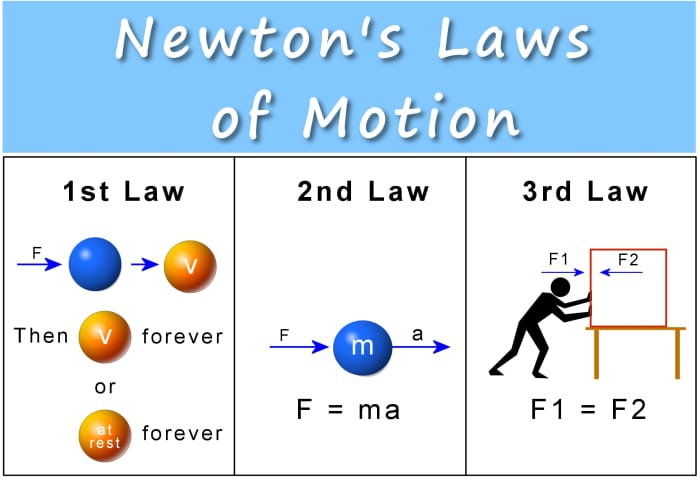Sir Isaac Newton's Laws of Motion are the cornerstone of classical mechanics, laying the foundation for our understanding of motion and its relationship to forces. These laws, though seemingly simple, have revolutionized our view of the universe and continue to shape various scientific and engineering disciplines. But how do we verify these principles? This article delves into the fascinating world of experiments and evidence that solidify the validity of Newton's Laws of Motion.
Before exploring verification, let's revisit the three pillars of Newtonian mechanics:
- First Law: The Law of Inertia: An object at rest stays at rest, and an object in motion stays in motion with constant velocity (speed and direction) unless acted upon by an unbalanced force. This principle emphasizes the inherent tendency of objects to resist changes in their state of motion.
- Second Law: The Law of Acceleration: The acceleration of an object is directly proportional to the net force acting on it and inversely proportional to its mass. In simpler terms, the greater the net force acting on an object (the sum of all forces acting on it) and the smaller its mass, the greater its acceleration.
- Third Law: The Law of Action-Reaction: For every action, there is an equal and opposite reaction. Whenever one object exerts a force on another object, the second object exerts a force back on the first that is equal in magnitude but opposite in direction.
These laws provide a framework for predicting and explaining the motion of objects in various situations. However, the question remains: how do we know they're true?
The Power of Experimentation: Putting Theory to the Test
Science thrives on evidence, and Newton's Laws are no exception. Here's a glimpse into some key experiments that have solidified their validity:
- Galileo's Leaning Tower of Pisa Experiment (Though Not Actually Performed): While historical accounts of Galileo Galilei dropping objects from the Leaning Tower of Pisa may not be entirely accurate, the underlying principle holds true. Experiments with inclined planes have shown that regardless of an object's weight, they accelerate at the same rate down the incline due to gravity (assuming negligible air resistance). This aligns with the second law, where the force of gravity acts on all objects, causing them to accelerate.
- Frictionless Planes and Air Tracks: Scientists have developed air tracks and low-friction surfaces to minimize the effects of friction and isolate the influence of forces on motion. These experiments showcase the first law in action. An object set in motion on a frictionless surface will continue moving indefinitely unless acted upon by an external force like gravity or air resistance.
- Rocket Motion and the Law of Action-Reaction: The concept of action-reaction is readily observed in rocket propulsion. As hot gases are expelled from the rocket engine (action), the rocket experiences a force in the opposite direction (reaction), propelling it forward. This principle applies not just to rockets but to various everyday scenarios, from throwing a ball to swimming.
These experiments represent just a fraction of the vast body of evidence supporting Newton's Laws. Everyday observations also contribute – the way a ball rolls to a stop after being thrown, the constant speed of a car on a frictionless highway (hypothetical, of course!), or the recoil of a firearm – all subtly illustrate the principles at play.
Limitations and the Realm of Relativity
While remarkably accurate in everyday situations and for objects moving at speeds much slower than the speed of light, Newton's Laws have limitations. As we delve into the realm of high velocities and strong gravitational fields, the theory of relativity proposed by Albert Einstein becomes more relevant.
Relativity suggests that the laws of motion need to be modified at speeds approaching the speed of light. Time and space become intertwined, and mass increases with velocity. However, for most practical applications on Earth and for objects moving at relatively slower speeds, Newton's Laws remain the gold standard.
Applications and Beyond
The impact of Newton's Laws extends far beyond theoretical physics. Here are some real-world applications:
- Engineering Marvels: From designing bridges and buildings to creating spacecraft and airplanes, engineers rely on these laws to understand how forces affect objects and structures.
- Space Exploration: Newton's Laws are fundamental to calculating trajectories, orbital mechanics, and the forces involved in launching rockets and spacecraft.
- Everyday Technology: From the way your car brakes to the motion of a ball on a playing field, the principles of force and motion govern our interactions with the physical world.
Understanding these laws allows us to predict and manipulate the motion of objects, leading to advancements in various fields of scientific experiment that confirm these principles add another layer of evidence to their validity.
Tags:
Science

